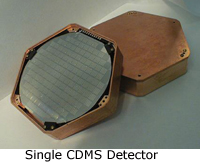Professor Shikha Nangia Named as the Milton and Ann Stevenson Endowed Professor of Biomedical and Chemical Engineering
The College of Engineering and Computer Science (ECS) has announced the appointment of Shikha Nangia as the Milton and Ann Stevenson Endowed Professor of Biomedical and Chemical Engineering. Made possible by a gift from the late Milton and Ann Stevenson,…


 Dark matter does not emit or reflect light, but scientists believe that it makes up 85 percent of the matter in the Universe. “Dark matter is the glue that holds galaxies together,” says Richard Schnee, assistant professor of physics in SU’s
Dark matter does not emit or reflect light, but scientists believe that it makes up 85 percent of the matter in the Universe. “Dark matter is the glue that holds galaxies together,” says Richard Schnee, assistant professor of physics in SU’s